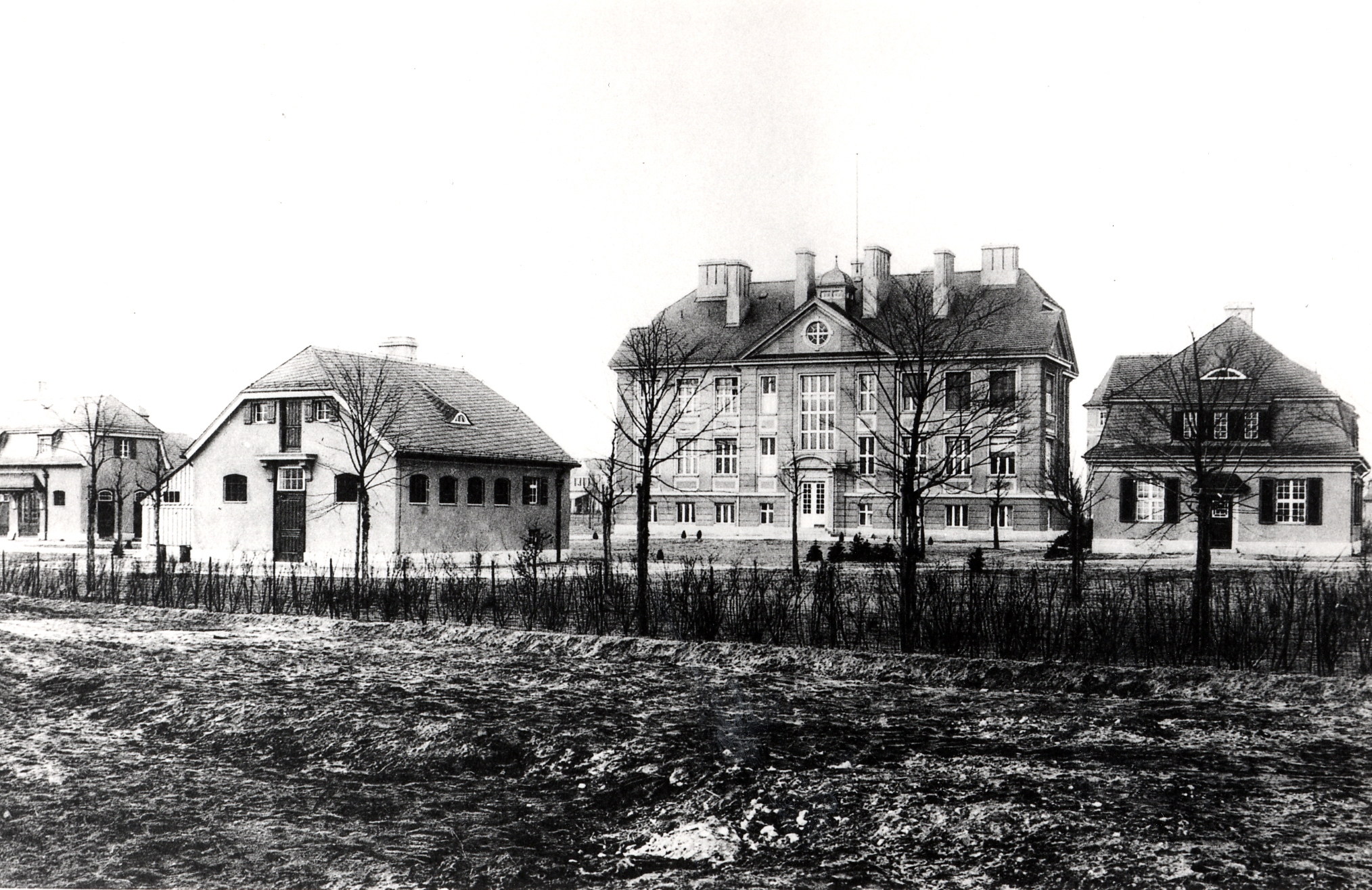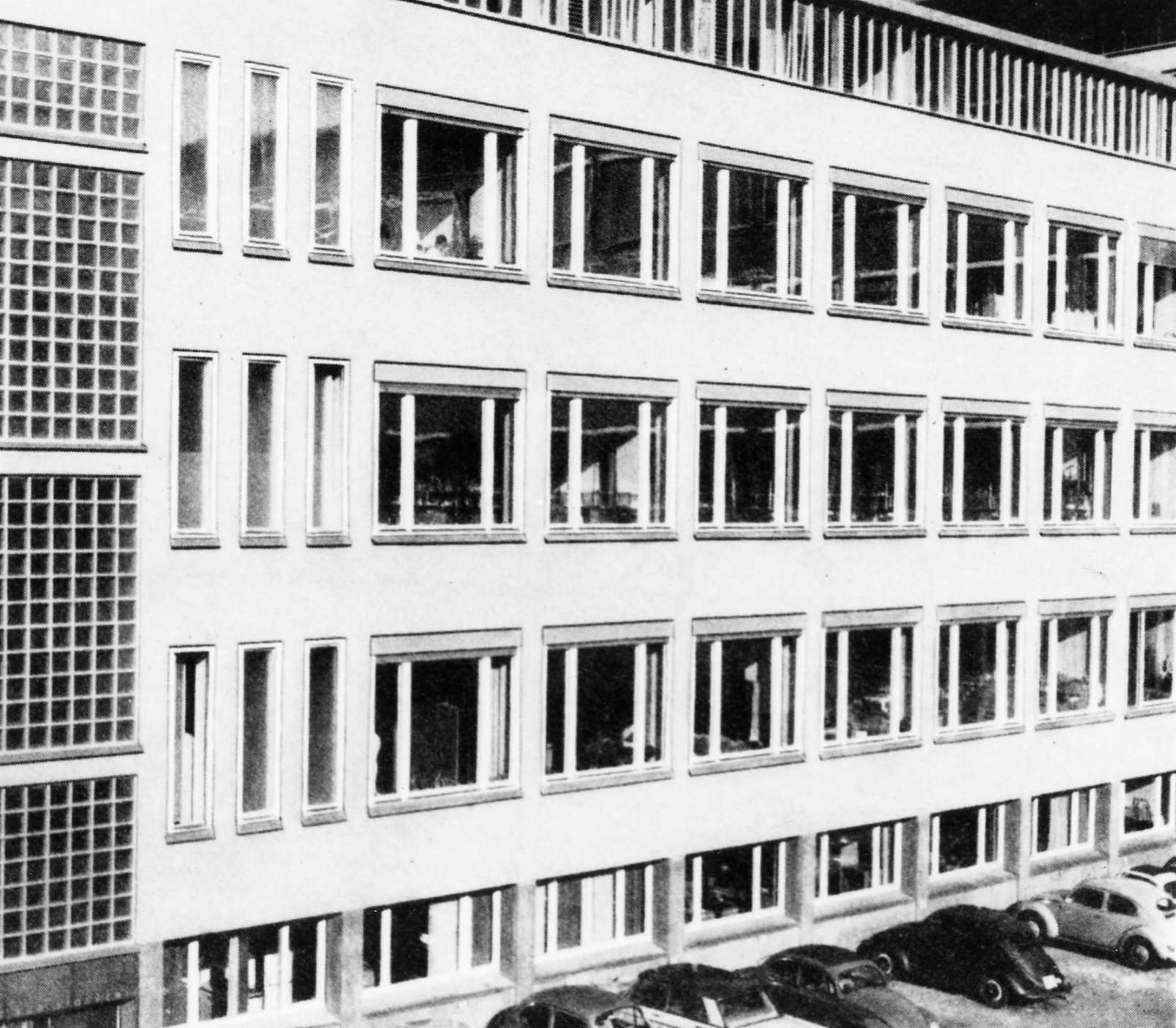2 OUR PREDECESSORS
1913
The KWI for Experimental Therapy in Berlin-Dahlem
INSTITUTE OF BIOCHEMISTRY

INSTITUTE OF BIOCHEMISTRY
INSTITUTE OF BIOCHEMISTRY
The oldest predecessor of our institute emerged from the chemical department of the Kaiser Wilhelm Institute (KWI) for Experimental Therapy founded in Berlin-Dahlem in 1913. Alongside the founding director August von Wassermann (1866–1925), the biochemist Carl Neuberg (1877–1956) became the second director of the institute in 1922, now called KWI for Experimental Therapy and Biochemistry. After Wassermann’s death in 1925, Neuberg took over as sole director. The internationally renowned biochemist was expelled from office in 1934, due to his Jewish heritage, and emigrated in 1939 to the USA.
In 1936, Neuberg was succeeded by Adolf Butenandt (1903–1995), who was granted a Nobel laureate in 1939 and served as president of the Max Planck Society (MPG) from 1960 to 1972. Butenandt was a science organizer who was well connected in the Nazi regime. His institute was relocated to Tübingen in 1943/44 because of Allied air raids and incorporated into the newly founded MPG in 1949. In 1956, the Max Planck Institute (MPI) of Biochemistry moved to a new building in Munich and in 1973 it was merged with the other two Munich MPIs working in similar fields.
1930s
The KWI for Experimental Therapy in Berlin-Dahlem
INSTITUTE FOR PROTEIN AND LEATHER RESEARCH

INSTITUTE FOR PROTEIN AND LEATHER RESEARCH
INSTITUTE FOR PROTEIN AND LEATHER RESEARCH
The KWI for Leather Research was founded in Dresden in 1922 and mainly conducted industrial research. Its director, Max Bergmann (1886–1944), was dismissed in 1933 due to his Jewish heritage and emigrated to the USA. His successor, Wolfgang Grassmann (1898–1978), held office until 1968. During World War II, the institute participated in materials tests in the Sachsenhausen concentration camp, during which prisoners were tortured and died (for more information see station 9). The institute building was completely destroyed during air raids in 1945 and the rescued equipment was transferred to Regensburg.
After the war, Grassmann established a Research Institute for Protein and Leather in Regensburg in 1948, which was incorporated into the MPG as a “Research Unit” in 1949 and became the MPI for Protein and Leather Research in 1954. In 1957, the MPI for Protein and Leather Research moved into a new building in Munich (Schillerstraße) located in the immediate vicinity of the MPI of Biochemistry on Goethestraße. In 1973, the two would join to become part of the newly formed MPI of Biochemistry in Martinsried.
1960s
The MPI for Cell Chemistry in Munich
INSTITUTE FOR CELL CHEMISTRY

INSTITUTE FOR CELL CHEMISTRY
INSTITUTE FOR CELL CHEMISTRY
In 1954, the German Research Institute for Psychiatry, which was part of the MPG, founded an Institute for Cell Chemistry in Munich. Feodor Lynen (1911–1979), professor of biochemistry at the Ludwig Maximilians University, became its director. Since there was hardly any scientific cooperation with other departments of the research institute, the MPG spun off the MPI for Cell Chemistry as an independent institute in 1956. In January 1959 the MPI for Cell Chemistry, together with the University Institute of Biochemistry, moved into a new building on Karlstraße.
For his research on the mechanism and regulation of the metabolism of cholesterol and fatty acids, Feodor Lynen received the Nobel Prize for Medicine and Physiology in 1964 together with Konrad Bloch. His institute grew so rapidly that the new premises were soon too small again—a solution was needed. The MPI for Cell Chemistry also moved to Martinsried in 1973 and fused with the MPI of Biochemistry.

